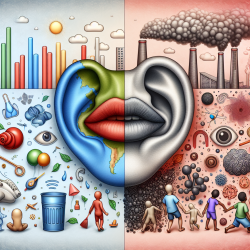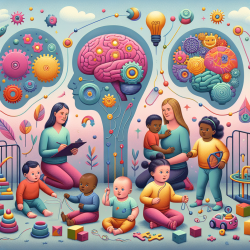Introduction
As practitioners in the field of speech-language pathology, our primary goal is to enhance the communication abilities of children. However, our efforts can be significantly influenced by environmental factors that affect children's health and development. A recent editorial in the International Journal of Environmental Research and Public Health sheds light on the critical issue of children's exposure to environmental contaminants. This blog post aims to explore how understanding these exposures can inform and improve our practices.
Understanding Environmental Exposures
The editorial titled "Children’s Exposure to Environmental Contaminants" emphasizes that children are uniquely vulnerable to environmental contaminants due to their behaviors, biological development, and the environments they frequent. This vulnerability can have profound implications for their health, including their cognitive and communicative development.
Key findings from the editorial include:
- Children's unique behavior patterns, such as hand-to-mouth activities, increase their exposure to contaminants found in dust and soil.
- Contaminants such as metals, pesticides, and respiratory irritants are prevalent in environments where children spend significant time, like homes and schools.
- Exposure to these contaminants is linked to various health issues, including respiratory problems, developmental delays, and learning disabilities.
Implications for Speech-Language Pathologists
For speech-language pathologists, these findings underscore the importance of considering environmental factors when assessing and treating children. Here are some ways practitioners can integrate this knowledge into their practice:
- Holistic Assessment: Include questions about environmental exposures in initial assessments. Understanding a child's home and school environment can provide insights into potential risk factors affecting their communication development.
- Collaboration with Families: Educate families about the potential impact of environmental contaminants on their child's development. Encourage practices that reduce exposure, such as regular cleaning to minimize dust and ensuring proper ventilation.
- Advocacy: Advocate for safer environments in schools and communities. This can involve working with local authorities to address environmental hazards that may affect children's health and learning.
Encouraging Further Research
The editorial highlights the need for ongoing research into children's environmental exposures. Speech-language pathologists can contribute to this body of knowledge by participating in interdisciplinary research efforts and by documenting and sharing observations from their practice.
By staying informed about the latest research and integrating these insights into practice, speech-language pathologists can play a crucial role in mitigating the effects of environmental contaminants on children's development.
Conclusion
Understanding and addressing environmental contaminants is essential for creating optimal outcomes for children in speech-language pathology. By incorporating environmental considerations into our assessments and interventions, we can better support the health and development of the children we serve.
To read the original research paper, please follow this link: Children’s Exposure to Environmental Contaminants: An Editorial Reflection of Articles in the IJERPH Special Issue Entitled, “Children’s Exposure to Environmental Contaminants”.










